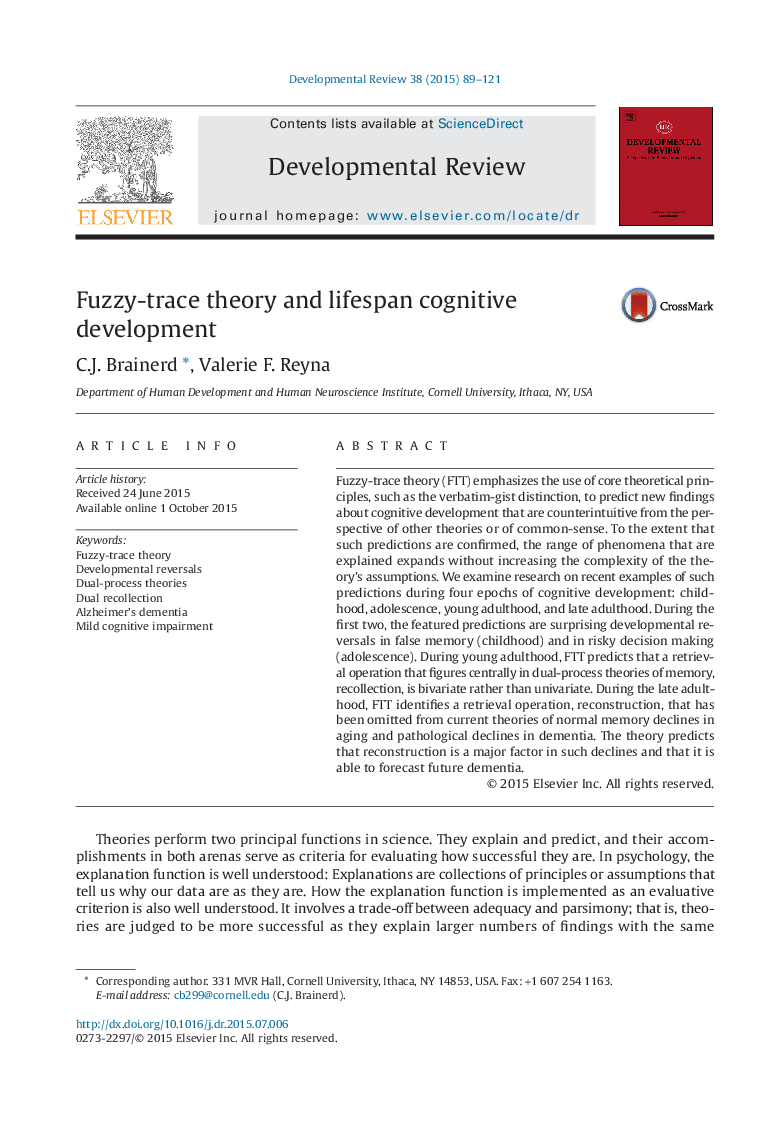| کد مقاله | کد نشریه | سال انتشار | مقاله انگلیسی | نسخه تمام متن |
|---|---|---|---|---|
| 353444 | 618798 | 2015 | 33 صفحه PDF | دانلود رایگان |
• Lifespan implementation of fuzzy-trace theory's verbatim-gist distinction.
• Verbatim-gist distinction predicts developmental reversals.
• Verbatim-gist distinction predicts two forms of recollection.
• Verbatim-gist distinction explains memory loss in dementia.
Fuzzy-trace theory (FTT) emphasizes the use of core theoretical principles, such as the verbatim-gist distinction, to predict new findings about cognitive development that are counterintuitive from the perspective of other theories or of common-sense. To the extent that such predictions are confirmed, the range of phenomena that are explained expands without increasing the complexity of the theory's assumptions. We examine research on recent examples of such predictions during four epochs of cognitive development: childhood, adolescence, young adulthood, and late adulthood. During the first two, the featured predictions are surprising developmental reversals in false memory (childhood) and in risky decision making (adolescence). During young adulthood, FTT predicts that a retrieval operation that figures centrally in dual-process theories of memory, recollection, is bivariate rather than univariate. During the late adulthood, FTT identifies a retrieval operation, reconstruction, that has been omitted from current theories of normal memory declines in aging and pathological declines in dementia. The theory predicts that reconstruction is a major factor in such declines and that it is able to forecast future dementia.
Journal: Developmental Review - Volume 38, December 2015, Pages 89–121
